
A thimble clevis is a hardware used to connect suspension insulators or other components to the end of the conductors. This provides mechanical support and attachment points for various components. It resembles a thimble-like hoop which characterizes its shape. It is from durable materials such as steel or aluminum alloy. This ensures their durability and ability to withstand mechanical and environmental stresses. This is especially in the diverse climate conditions in Southeast Asia. They come in various types and designs that accommodate conductor sizes, attachment methods and specific application requirements. Common types include standard thimble clevis, adjustable, slip-over, compression-type, threaded and swivel thimble clevises. They find use in various applications such as dead-end attachments, guy wire connections, tension control, attachment to crossarms, transmission lines and electrical substations.
Key features of the thimble clevis
Thimble clevis consists of several features that ensure the functionality and operability. These features contribute to the structural integrity and reliability of transmission systems. They also ensure the secure connection of conductors to other hardware components. This is while providing protection and load distribution. The following are the key features of a thimble clevis.
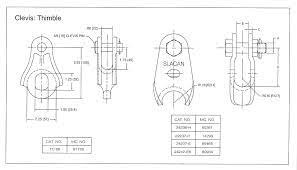
- Attachment point – they work as the attachment points for the conductor ends. This allows them to connect to the insulator or other components.
- Load distribution – they distribute the mechanical load of the conductor to other parts of the transmission line.
- Conductor protection – they also prevent direct contact between the conductor and other hardware. This is to help reduce wear and tear on the conductor.
- Insulator connection – they help to connect suspension insulators to the conductor ends.
- Durability – they are from high-strength materials that ensure their durability and ability to withstand mechanical and environmental stresses.
- Corrosion resistance – they have coatings with corrosion-resistant materials. They help to withstand outdoor environments and exposure to weather.
- Tension control – the clevises help to control the tension of the conductor. This is by connecting it to components that maintain the desired tension level.
Selection and maintenance of thimble clevis
There are various factors that influence the decision-making process for thimble clevises. These factors help to ensure a secure and reliable connection between conductors and hardware. These factors include cost-effectiveness, maintenance, conductor size and type, load and tension requirements, application type and attachment method. The installation of thimble clevises requires proper techniques and attention to detail. This is to ensure the safety and reliability of the power infrastructure. The following is a basic installation step-by-step guide for thimble clevises.
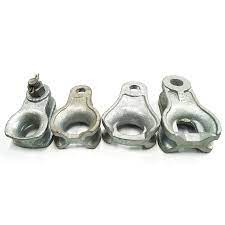
- Conductor inspection – check the conductor to ensure it is free from defects, damage or contaminants.
- Selection – verify that the thimble clevis is suitable for the conductor size, load requirements and application type.
- Preparation and layout – lay out the necessary thimble clevises and associated hardware at the designated attachment points.
- Attachment point – identify the attachment point on the conductor where the clevis will install.
- Attachment preparation – thread the conductor through the clevis loop for a threaded thimble clevis.
- Clevis pin insertion – insert the pin through the attachment hole and secure it with the appropriate hardware.
- Fastening – fasten the thimble clevis to the conductor using the specified hardware or torque values.
- Torque verification – verify the torque of the fasteners using a torque wrench to ensure they tighten properly.
- Alignment check – ensure the thimble clevis aligns with the conductor and the conductor’s length.
- Inspection – conduct an inspection of each installed thimble clevis. This is to ensure proper attachment, alignment and hardware security.
- Documentation – keep detailed records of the installation process to help in the future. This is including locations, torque values, dates and any other observations.
Maintenance and inspection of thimble clevis
The thimble clevis requires proper maintenance and inspection. This helps to ensure the continued reliability and performance of the systems. This may also involve considering the environmental conditions in the installation areas. The following is a basic maintenance and inspection guideline for thimble clevis.
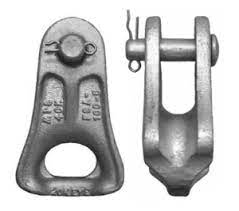
- Conduct regular visual inspections to identify any signs of wear, damage, corrosion or deformation on the thimble clevis.
- Check the attachment of thimble clevis to conductors, insulators or other hardware components. Ensure proper fastening and alignment of the clevis.
- Inspect the clevis pins, fasteners and other associated hardware for signs of rust, wear or deterioration.
- Look for corrosion on the clevises due to the humidity and salt exposure in southeast Asian environments.
- Observe the load distribution across the thimble clevis and associated components. This is to ensure even stress distribution.
- Check for any obstruction or restrictions in the movement of the conductor or hardware caused by the thimble clevis.
- Clean the thimble clevises to remove dirt, debris and contaminants that could lead to corrosion or mechanical issues.
- Apply suitable lubricants t moving parts of the thimble clevis to reduce friction and ensure smooth operation.
Comparative analysis of thimble clevis in Southeast Asia
A comparative analysis of the thimble clevis involves assessing different types, brands and features of the clevis. Some of the factors to consider include quality, durability, compatibility and costs-effectiveness. There are various thimble clevis suppliers and manufacturers in the market to consider. The comparative analysis ensures the selection of the best thimble clevis. The following is a basic approach to conduct a comparative analysis of the thimble clevis.
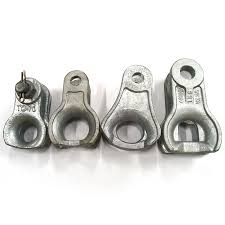
- Types of thimble clevises – identify the types of clevises available including standard, adjustable, slipover, threaded and compression-type.
- Manufacturer reputation – consider manufacturers known for producing high-quality transmission line hardware.
- Material quality – compare the materials used in manufacturing thimble clevis. Opt for corrosion-resistant materials suited for Southeast Asia’s climate.
- Load rating and specifications – compare the load rating, specifications and performance characteristics for different clevis models. Ensure the chosen clevis can handle the mechanical loads and tensions relevant to your specific application.
- Compatibility with hardware – evaluate how well thimble clevises align with other hardware components.
- Corrosion resistance – consider the level of corrosion resistance offered by different thimble clevis models. Consider the humid and coastal conditions in Southeast Asia.
- Ease of installation – compare the installation process and requirements of different thimble clevises. This is to determine which aligns with your projects needs and resources.
- Maintenance requirements – analyze the maintenance recommendations and requirements for each type of thimble clevis. This helps to understand their long-term upkeep.
- Pricing and cost-effectiveness – compare the prices of different thimble clevis models. Consider their features, quality and overall value.
Certifications standards in Southeast Asia
There are various certifications and standards of the thimble clevis in Southeast Asia. They help to ensure their quality, reliability and compatibility. Thimble clevises ensure that the selected product comply with the relevant standards. They also ensure the safety, performance and reliability of your transmission systems. The following are the common certifications and standards for thimble clevises.
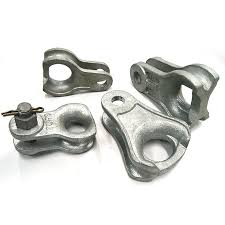
- IEC standards – these provide standards for insulators for overhead lines and composite insulators.
- ASEAN standards – these are regional standards for electrical and transmission equipment relevant to thimble clevises in the country.
- National standards – there are various national standards and regulations for electrical equipment. This is in countries like Thailand, Indonesia, Malaysia and Vietnam.
- ISO certifications – these indicates the quality management standards. These standards reflect the quality of their products.
- OEM and industry standards – some manufacturers might have their own specifications or standards for thimble clevises.
Regional markets for thimble clevis in Southeast Asia
There are various factors that influence the growing demand for reliable power transmission and distribution infrastructure. There are various factors that influence the markets for thimble clevis. These include development, upgrade and expansion of transmission lines. the following are the key factors that influence the market in Southeast Asia.
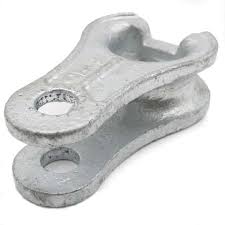
- Infrastructure development – modernization of the power infrastructure requires the use of thimble clevises for expansion.
- Urbanization and electrification – the rapid urbanization of the rural areas is boosting the demand for reliable power transmission systems.
- Renewable energy integration – energy sources like solar and wind requires robust transmission infrastructure and hardware like thimble clevis.
- Government initiative – there are various government policies that enhance energy access, reliability and efficiency.
- Supplier networks – established supplier of transmission line hardware like thimble clevises connect with utility companies, contractors and distributors to meet the rising demand.
Frequently asked questions
What is a thimble clevis?
This is a component used to securely attach conductors to insulators or other hardware components. It helps maintain the stability and reliability of the transmission lines.
What is the benefit of thimble clevis in power transmission?
Thimble clevises provide a secure attachment point for conductors which ensures they are properly insulated, supported and capable of withstanding mechanical forces and environmental condition.
What are the materials used to make thimble clevises?
Thimble clevises are from high-strength materials such as steel or aluminum alloy. They also have corrosion-resistant coatings to withstand the humid and coastal condition of Southeast Asia.
